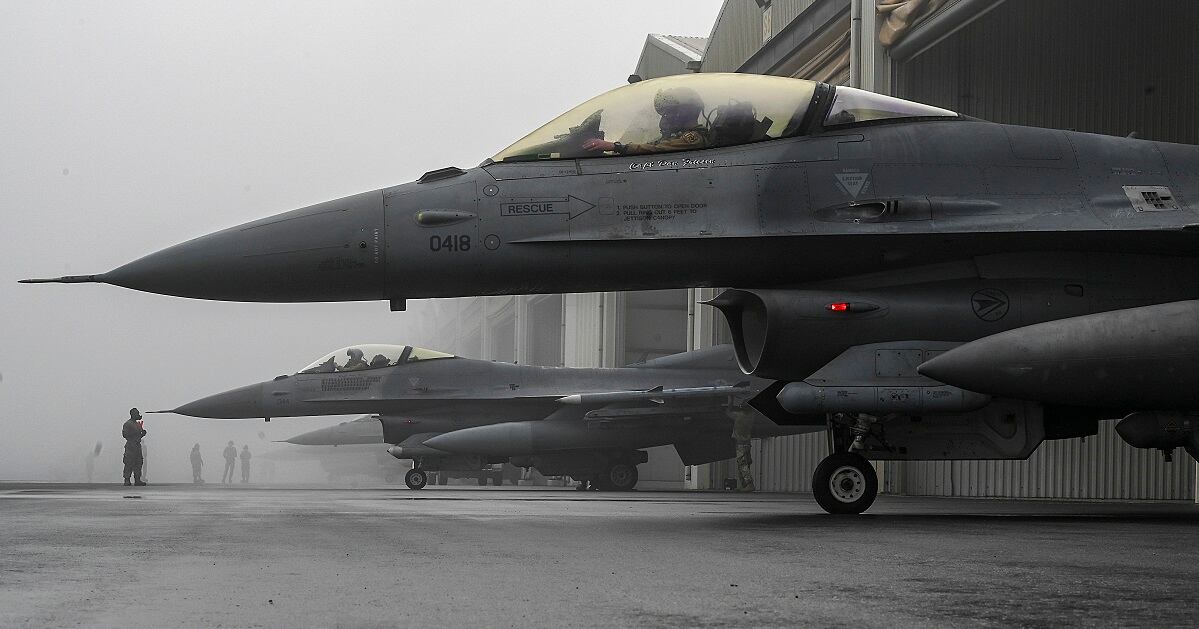Two months ago, the 380th Air Expeditionary Wing welcomed the 480th Fighter Squadron from Spangdahlem Air Base, Germany, to Al Dhafra Air Base in the United Arab Emirates, arguably the most strategically located and diverse AEW in the Middle East.
Immediately upon arrival, the “Warhawks” were re-designated as the 480th Expeditionary Fighter Squadron and began executing kinetic operations, regional competition, partner integration and unit readiness training. The Warhawks were dozens of sorties into their deployment before even donning their new deployment patches; a testament to the agile, adaptable nature of our combat squadrons. In just over 60 days, they executed approximately 470 combat and training sorties, and integrated with multiple joint and regional partners while experiencing three different air expeditionary wings’ locations.
The Warhawks’ deployment demonstrated the power of dynamic force employment (DFE), a deployment characteristically agile, adaptable, short-term and in response to an emergent theater requirement. The Warhawks’ list of theater contributions and unit readiness gains is impressive, even more so when considering they were given weeks rather than months to complete it. The squadron’s deployment to Al Dhafra exceeded everyone’s expectations and, more importantly, demonstrated the merits of DFE.
First and foremost, the Warhawks’ DFE generated long-lasting effects with a brief, episodic and operationally unpredictable presence. Whether for combat, competition, partner integration, or all three, the Warhawks’ results demonstrated that a well-timed, intense deployment can produce results similar to an enduring one. There is no doubt that virtual presence equals absolute absence. Unfortunately, there is also no doubt that our Air Force can’t be everywhere at once. When tested, however, we consistently prove we’ll be where we’re needed, when we’re needed.

Second, DFE has the potential to turn our standard training model on its head. Typically, units reach their “readiness peak” just prior to deploying, sharpening their skills for combat in a deployed location. With more than 80 percent of the pilots tackling their first deployment experience, the squadron focused on completing much needed upgrades in combat skills. With time to spare, the unit accomplished all of its training objectives, and ultimately increased its combat capability by nearly 50 percent, measured from qualifications completed. The Warhawks came to us sharpened for combat, but the truth is that they’ll return home more ready than when they arrived.
Finally, DFE is capable of improving our efficacy in managing Air Force forces around the globe. Remember, the Warhawks, a EUCOM assigned unit, “DFE’ed” to CENTCOM to advance U.S. regional interests while improving squadron readiness. From their CENTCOM location, they then participated in contingency operations in support of AFRICOM.
EUCOM, to CENTCOM, employed in AFRICOM, and back to EUCOM; inter-combatant command use of forces underpins our ability to manage a global force in high demand.
So what does DFE mean for an air expeditionary wing? Let’s start with what “expeditionary” means: to be expeditious; to be on an expedition. As an AEW commander, I face the reality that this wing has been at Al Dhafra Air Base for more than two decades. As DFE becomes the preferred engagement option, shouldn’t it also inspire an evolution in our existing AEW deployment model? AEWs of the future, which may resemble AEWs of the past, need to become more agile, adaptable, and perhaps be deployed episodically. Remember the importance of operational unpredictability? Our adversaries do.
The Air Force chief of staff continues to challenge airmen to “accelerate change or lose.” The chief’s mandate certainly applies to how we generate combat airpower and deploy the force. Consequently, rethinking how we deploy AEWs should also be on the table. I’m confident there’s a better model for AEWs in the minds of our young airmen, one that balances readiness with the increasing demands of great power competition. Making that model a reality will help secure our future.
Brig. Gen. Larry Broadwell is the commander of the 380th Air Expeditionary Wing at Al Dhafra Air Base, UAE. He is a command pilot with hours in the C-130E, F-15C, F-22, and RQ-4. The opinions expressed in this commentary are his own and do not represent U.S. government or Department of Defense positions.
Editor’s note: This is an Op-Ed and as such, the opinions expressed do not necessarioly reflect the views of Air Force Times or its staff. If you would like to respond, or have an editorial of your own you would like to submit, please contact Air Force Times editor Kent Miller.





